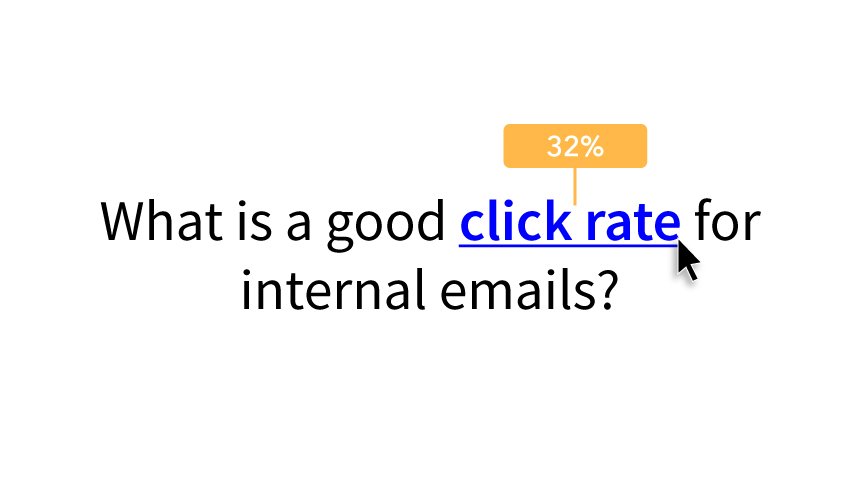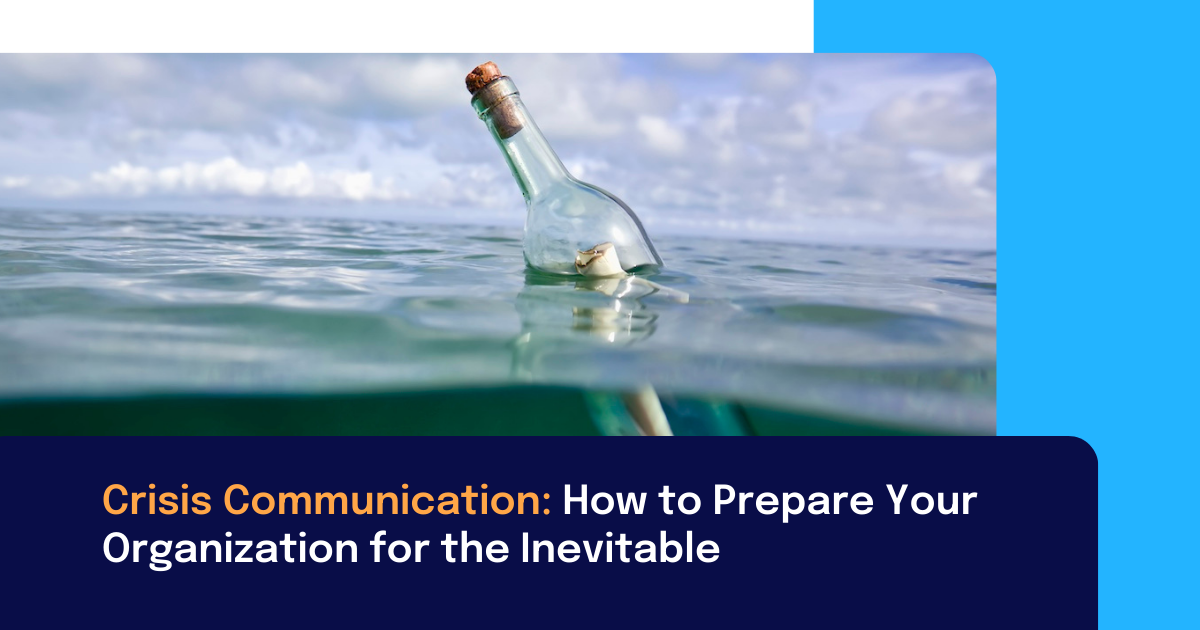If you’re already collecting internal data like click rates on your email content, I can almost guarantee you’ve asked yourself:
“Is this a good click rate?”
Or: “Are employees really engaged?
And, like the stellar communicator that you are, you’ve also probably wondered:
“How do I make it better?”
These are all very good questions.
And they all have answers you’re probably not going to like.
What is a good click rate for an internal email?
Your organization, like all organizations, has a unique culture. And that culture will permeate the ways you communicate, including how people within your organization use different communication channels.
Email is no exception.
Although email has been around a long time and feels pretty standardized, no two organizations are going to use it in exactly the same way.
With this in mind, comparing two organizations and their email data isn’t exactly useful.
It turns out that open and click rates vary quite a bit across industries and list size. Here’s what we found when we did our own benchmark study using data pulled from our platform:
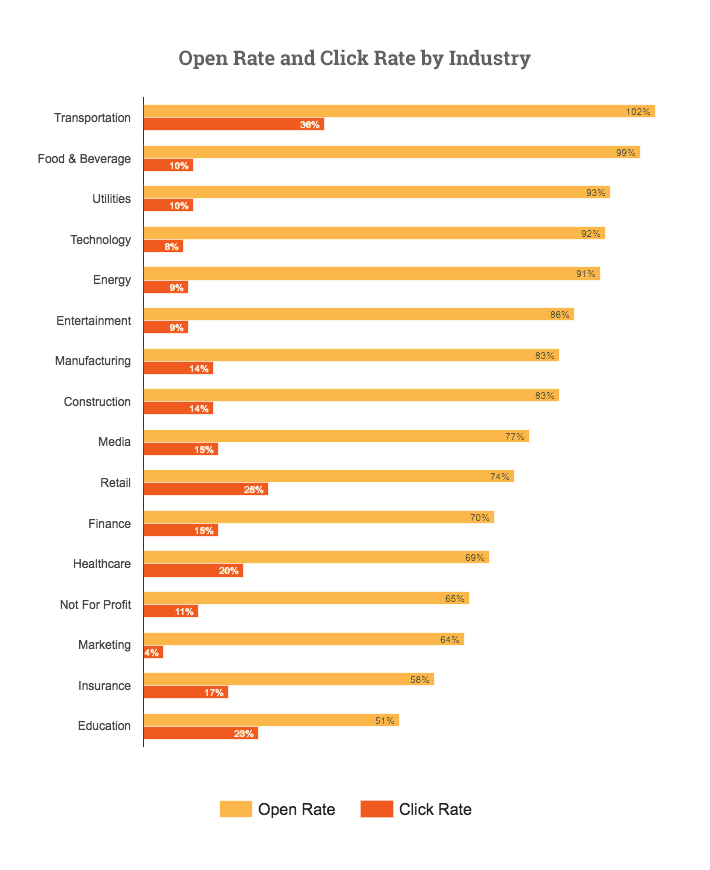
So there really is no objective “good click rate” for internal emails.
Though it may be tempting to look externally for validation of your click rates, you won’t be doing yourself any favors by giving external benchmarks any more weight than your own.
How do I improve my internal email click rate?
Once you’ve set your own internal benchmarks, start tweaking elements in your emails to see if you can improve your click rate.
Here are five steps to take if you want to improve your internal email click rate:
1. Design your email for clicks
Ask yourself: Are the links visible? Is it clear that they are meant to be clicked?
If people don’t know what to click, they won’t click.
Burying a link deep in a paragraph is going to be way less effective than putting your links in clearly defined call-to-action buttons. And if you make sure the button is surrounded by plenty of white space, your employees’ eyes will be drawn to the link.

Buttons are also best for mobile. If you notice you have a lot of employees opening their emails on mobile phones and your link clicks are low, consider how your link looks on mobile. Touch screens can make clicking an in-text link on a phone a pain, so make it easy for employees to click and give them nice big buttons.

2. Always be clear
Ask yourself: Will people understand this? How would I explain this to an 8th grader?
Corporate content isn’t always written in the most comprehensible voice and tone. But accessibility is essential if you expect anyone to engage.
Clarity should always be the highest goal of your writing. No matter how grand the benefits of clicking a link, if people can’t read the link text or don’t want to read what you have to say about it, they are going to tune out.
If you lose their interest before the link, there’s virtually no hope they will ever click.
And if you need help writing more clearly, try tools like the Hemingway App or Grammarly.
3. Keep it interesting and relevant
Ask yourself: Are the links relevant? Do they matter to employees?
If your email content is relevant and interesting, employees are going to want to read more of it and will click the links to get further info. Plain and simple.
But it isn’t always immediately obvious what is interesting and relevant to employees.
A lot of communicators who track their link clicks have told us that they have been caught off guard by the kinds of information people were actually interested in. Their advice is to look at what people are already clicking and try and understand exactly why they are clicking on it, so you can serve them more useful content.
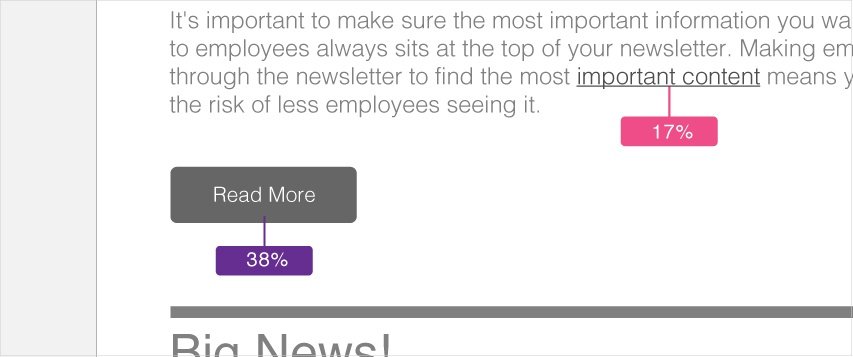
For example, if more people are clicking on links to policy and procedure docs than a link to your company’s latest media appearance, it could indicate that your employees are more interested in content that requires action — like a signature by a certain deadline — than a media clip that isn’t as time-sensitive.
Need will often beat out novelty, so make your content useful.
And always make sure you’re paying attention to what people are clicking on and tailor your content accordingly.
4. Give them a reason
Ask yourself: Are the links interesting? What are the benefits of clicking the link and are those benefits made obvious?
Your email content should highlight the benefits to the readers and make it obvious why they should click your links.
It’s a delicate balance.
If you’ve covered everything your employees should know about a given topic in the email content, they really won’t have much reason to click the link.
Set expectations for what’s beyond the click. Whet your readers’ appetites with something that will interest them, then prompt them to find out more by clicking on your link.
5. Build a reputation
Ask yourself: Would I click this link? Are we presenting ourselves as a reputable source of information?
You may be tempted to do something a bit naughty, something every marketer has probably done at least once.
It’s always tempting, but never worth it.
I’m talking about clickbait.
Clickbait is when you trick someone into clicking a link by promising something that you will not deliver.
Often, clickbait headlines promise content so ridiculous that people can’t help but click:
“Man Tries To Hug a Wild Lion, And You Won’t Believe What Happens Next!”
“31 Things Guaranteed To Make You Say ‘OMG’!”
We can’t help but click on headlines like these — no matter how ridiculous they might be.
But nine times out of ten, what lies beyond that oh-so-clickable headline is not what we were looking for. And we learn to distrust these kinds of headlines — and the sources that post them. So we stop clicking.
If you’re lying in your link or linking to non-reputable sources, you will lose your readers’ trust.
And even further, If we force or artificially inflate the clicks on a link by using clickbait, we aren’t actually collecting any interesting information about our employees.
So it pays to be honest — even if you’re not hitting a super high click rate. At least with accurate click data, you can begin to learn more about what your employees need and improve both your content and its delivery.
How do I set a baseline for internal email click rates?
Before you start tweaking your emails to increase your click rate, you need to establish a baseline.
A baseline will allow you to figure out more accurately what changes improved your click rate and what you can focus on to improve.
But don’t worry, it’s not as complicated as it might sound.
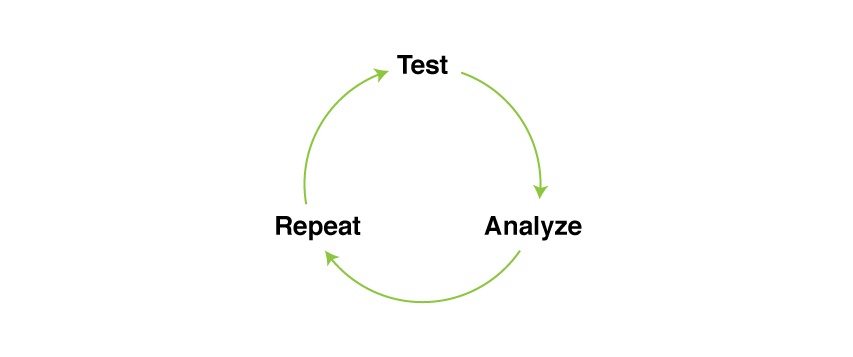
All you have to do is send out a few emails (or pull some data from the emails you’ve sent in the past) and calculate your average click rate.
Then use some of our suggestions above to tweak your next email. When the email data starts rolling in, see how the new changes impacted your click rate by comparing it to your previous averages.
But if your click rate is up, that doesn’t mean your work is done. Keep tweaking and looking at the data to see where you can keep improving.
And if your click rate goes down, don’t freak out.
There is always going to be some variation in the data. Things will happen outside of our control that we can’t always predict. So try again. One data point — or, rather, one email — isn’t enough to conclude whether your changes actually worked.
And always remember: if you don’t see huge jumps in the data, it doesn’t mean you aren’t improving. Measuring and testing your approach isn’t a one-time thing. It takes patience and consistency.
In the end, the insights you will gain from your data and testing will surprise you and help you deliver better communications to employees — so don’t give up!
